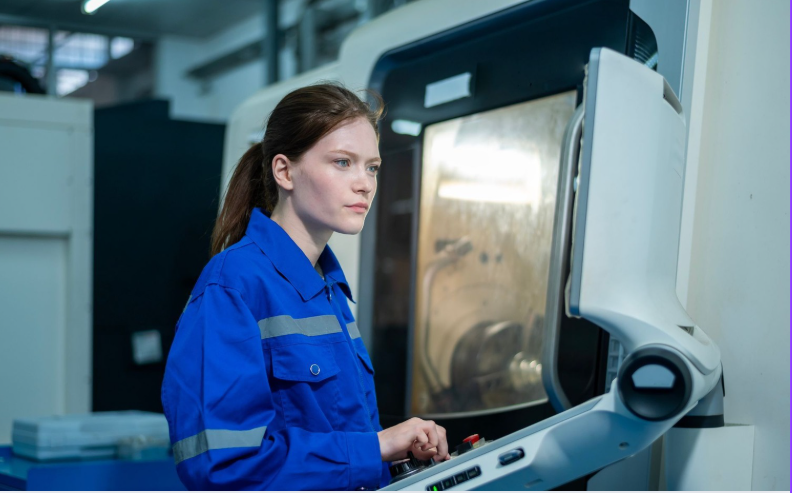X-ray machines play a pivotal role in diagnostic imaging, providing accurate and timely insights into patient health. However, like any advanced technology, they are subject to wear and tear over time. Regular X-ray Equipment Maintenance is crucial to ensure optimal performance, safety, and reliability. Ignoring early warning signs can lead to costly repairs, unnecessary downtime, and even compromised diagnostic results. In this article, we explore the top five signs that indicate your X-ray equipment may be in need of maintenance.
1. Inconsistent Image Quality
The first most obvious sign your equipment needs maintenance is a drop in image quality. Blurred images, unequal exposure, or artifacts showing up in scans can indicate software problems, damaged components, or calibration concerns. This is a fundamental problem since diagnosis accuracy mostly depends on high-quality imaging.
Many times, these difficulties originate from X-ray tube malfunction or wear in image detectors. Routine X-ray equipment maintenance finds and fixes these problems before they compromise diagnosis capability.
2. Strange Noises During Operation
X-ray machines are made to run silently and fault-free. Unusual sounds like clicking, grinding, or humming from your equipment could point to internal mechanical issues. Usually, these noises result from system loose components or worn-out moving elements.
Ignoring these auditory signals may lead to more significant mechanical failures. Addressing them through timely X-ray Equipment Maintenance can help avoid the need for a full-scale Medical X-ray Repair Service.
3. Delayed Processing Times
Unexpected image processing or capture delays raise still another red signal. Should your X-ray system take more than normal to complete scans, load images, or process data, it may point to a problem with either internal computing systems or software. Sluggish performance might cause delays in patient treatment and disturbance of clinical processes.
Regular X-ray equipment maintenance guarantees that internal systems are working effectively and that software and firmware are current, therefore resolving these problems.
4. Frequent Error Messages or System Warnings
Built-in diagnostic features on modern X-ray machines notify and error code when anything isn’t working as it should. Although a sporadic notice might not be reason for concern, regular warnings point to a more serious problem needing expert evaluation.
Ignoring these system alarms could cause a total breakdown that calls for comprehensive Medical X-ray Repair Service. Treat these warnings, then, as cues to plan regular maintenance.
5. Overheating or Power Fluctuations
One should not ignore an X-ray machine that overheats or suffers frequent power fluctuations. These symptoms could indicate internal cooling system, electrical wiring, or power supply unit malfunction. Working under such circumstances can be dangerous and maybe destroy the equipment more extensively.
By ensuring that cooling systems, power regulators, and other important parts are operating as they should, a proactive X-ray equipment maintenance program lowers the likelihood of system breakdown.
Why Regular X-ray Equipment Maintenance Matters
Preventive maintenance guarantees patient safety, increases diagnostic accuracy, and extends the life of your equipment—more than just a periodic check. Regular maintenance lets experts find little problems before they become expensive fixes or emergency failures.
Reliable Medical X-ray Repair Service providers help healthcare institutions avoid downtime and keep regulatory compliance. Planned X-ray equipment maintenance also helps to streamline processes, therefore lowering delays in patient treatment and raising general satisfaction.
FAQs
1. How often should I schedule X-ray Equipment Maintenance?
Most experts recommend biannual maintenance, although the frequency can vary depending on usage volume and manufacturer guidelines.
2. What does a typical X-ray Equipment Maintenance check include?
It includes inspecting mechanical parts, calibrating image detectors, updating software, and checking electrical systems to ensure everything is operating efficiently.
3. Can I perform any maintenance tasks in-house?
While basic cleaning and visual inspections can be done internally, complex diagnostics and repairs should be handled by a certified Medical X-ray Repair Service provider.
4. What are the risks of skipping maintenance?
Skipping maintenance can result in poor image quality, unexpected downtime, equipment failure, and even regulatory non-compliance.
5. How do I know if my maintenance provider is reliable?
Look for providers with proper certifications, a proven track record, and familiarity with your specific X-ray equipment models.
Final Thoughts
Healthcare professionals may guarantee that their imaging departments work effectively and free by being alert and identifying these five main indicators. Apart from the lifetime of the machines, a regular X-ray equipment maintenance schedule is crucial for the accuracy of diagnostics and patient and medical staff member safety.




